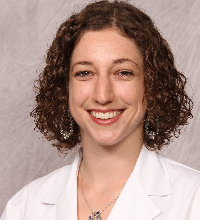MSACL 2024 Abstract
Self-Classified Topic Area(s): Proteomics > Various OTHER > none
|
|
Poster Presentation
Poster #35a
Attended on Wednesday at 12:15
|

|
 Surface Proteomics Identifies Distinct Therapeutic Targets for ALK-Positive Lung Cancer Surface Proteomics Identifies Distinct Therapeutic Targets for ALK-Positive Lung Cancer
Jacelyn Greenwald (1), Joseph Amann (2), David Carbone (2), Vicki Wysocki (1)
(1) Department of Chemistry and Biochemistry, The Ohio State University, Columbus, OH (2) The James Thoracic Oncology Center, The Ohio State University, Columbus, OH

|
Jacelyn Greenwald, BA (Presenter) 
Ohio State University |
|
Presenter Bio: My name is Jacelyn Greenwald, and I am a 3rd year PhD student in the Wysocki lab at Ohio State. I am in the Ohio State MD/PhD or MSTP program, and my ambition is to become a physician-scientist and to specialize in neurology. My research interests center around the use of proteomics and other mass spectrometry techniques to study the role of adipose-tissue derived extracellular vesicles in Alzheimer's disease. I also study tau protein from Alzheimer's patients, working to understand how the post-translational modification signature might explain tau aggregation. |
|
|
|
|
Abstract Admin Note: This abstract was has changed from the original submission of "Using Surfaceomics to Assess the Role of Adipose Tissue-Derived Extracellular Vesicles in Alzheimer’s Disease" on March 9, 2024.
INTRODUCTION
We hypothesize that aberrant expression of the ALK gene in ALK+ lung cancer induces the expression of yet unidentified surface-accessible proteins, which can be targeted for therapeutics. Our objective is to isolate these surface proteins, with the intent to better understand the downstream consequences of ALK rearrangement and fusion. These proteins can then be targeted with antibody-based therapeutics to improve ALK cancer survival outcomes.
METHODS
For this study, we will use the H3122 and H2228 cell lines which have naturally occurring EML4-ALK translocations. Cells will be biotinylated using NHS esters of biotin (Thermo). A second surface technique will involve using trypsin in small quantities (2-3ug/mL) and incubating cells for 30 minutes. Both the surface and "total minus surface" fractions will be analyzed. A third cohort will be whole intact cells.
Protein digestion and surface protein isolation: For surface proteomics (surfaceomics) analysis, we apply two techniques: first, sulfo-N-hydroxysulfosuccinimide (NHS) esters of biotin (Thermo) are used to label primary amine groups on the cell surface. These tags form an amide bond with primary amines on surface-exposed lysines and N-termini. Surface proteins are then captured using neutravidin agarose (Thermo). The sulfo-NHS-SS-biotin tag includes a disulfide bond that can be reduced to elute the proteins from the neutravidin column.
A second surfaceomics approach involves light surface trypsinization to “shave” the cell and release proteins from its surface. Surface shaving uses trypsin in small quantities (around 2-3 μg/ml) and incubates cells for 15-30 minutes with shaking. Cells are then centrifuged to separate the cleaved surface peptides from the remaining shaved cells.
Mass spectrometry-based proteomics: All samples are subject to lysis with detergent, followed by reduction and alkylation. Digestion is performed using MS grade trypsin/LysC on a Protifi S-trap micro spin column. Peptides are eluted, then dried down and resuspended in water with 0.1% formic acid. LC-MS/MS is performed using a commercial timsTOF Pro mass spectrometer (Bruker Scientific) coupled to a nanoElute 2 high-performance liquid chromatography (HPLC) column. Samples are run on the column using a 120-minute linear reverse phase gradient. The column is 25 cm in length with 1.7 μm particles (IonOpticks, Australia). For each LC-MS/MS experiment, 200 ng of protein is loaded.
Data are collected using data-dependent acquisition (DDA) mode. The timsTOF Pro also has ion mobility, which adds an additional level of separation to the HPLC. The parallel-accumulation serial fragmentation (PASEF) capability of the timsTOF Pro allows us to collect more mass spectrometry information, leading to greater quantification and more sensitive protein assignment.
Data analysis: TimsTOF DDA-PASEF datasets are processed using FragPipe in conjunction with the MS/MS search engine MSFragger and IonQuant. Proteome FragPipe outputs are further processed using FunRich software and Reactome pathway analysis.
RESULTS
Preliminary studies have identified distinctly different protein expression profiles between surface and whole cell populations, with 2,887 proteins significantly differentially expressed between the two (adjusted p-value 0.05). Pathways which are upregulated in the surface fraction include toll-like and other receptor signaling, while cells without their surface intact expressed a greater proportion of metabolic and biosynthetic processes. Interestingly, many of the proteins implicated in cancer were upregulated in the surface fraction, including proteins mapping to non-small cell lung cancer pathways.
Comparing the control cell lines to the EML4-ALK variants reveals several proteins of interest, including CHI3L2 chitinase-3-like protein-2. This has already been identified as a biomarker in gliomas and is correlated with immune infiltration. Both EML and ALK are upregulated in the mutant populations, which validates the model.
DISCUSSION
The initial data demonstrates the surface protocol has great potential to identify novel therapeutic targets which can be attributed to ALK activation. As we continue to build upon this initial dataset, we anticipate the identification of strong targets for ALK+ lung cancer treatment.
|
|
Financial Disclosure
| Description | Y/N | Source |
| Grants | no | |
| Salary | no | |
| Board Member | no | |
| Stock | no | |
| Expenses | no | |
| IP Royalty | no | |
| Planning to mention or discuss specific products or technology of the company(ies) listed above: |
no |
|

